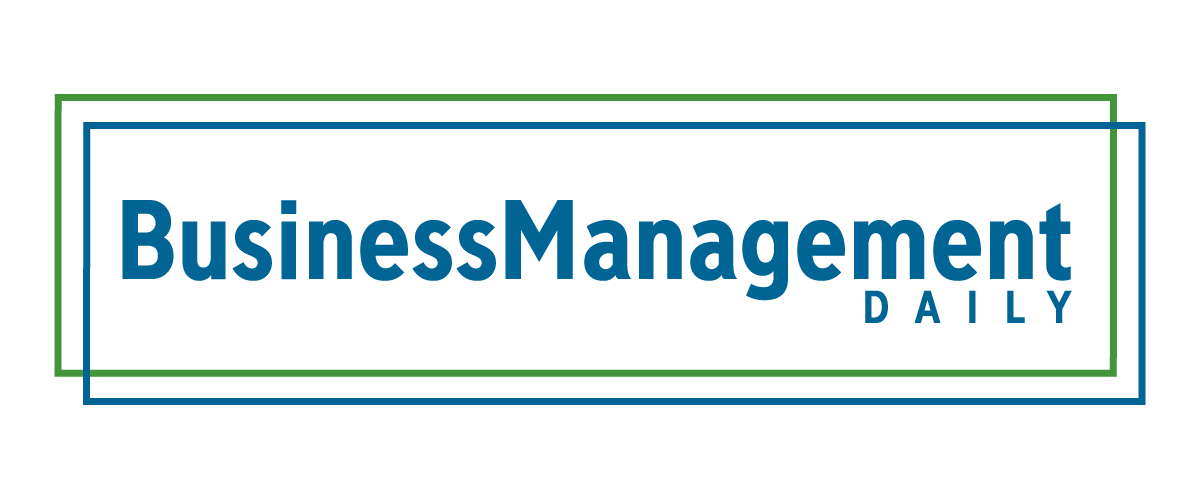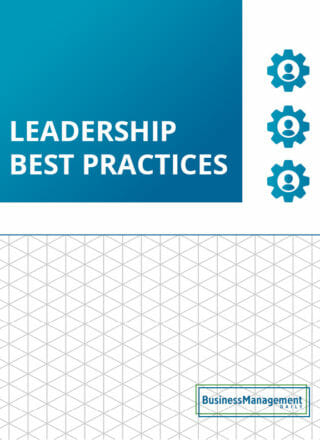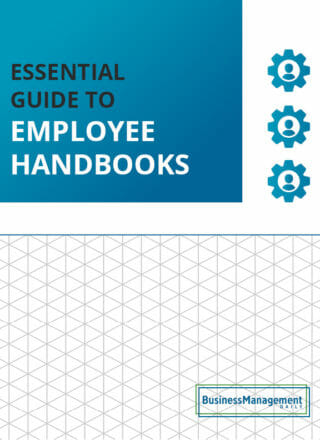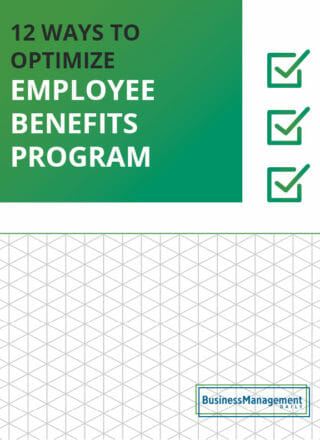Methods for improving employee productivity
Beyond burnout: Sustainable strategies for employee productivity
Do your business leaders expect you to improve workforce productivity in the coming year?
If so, you aren’t alone.
Research shows that 71% of business leaders receive pressure from executives to improve employee productivity, so it’s no wonder that stress transfers to managers.
Since productivity fuels profitability and customer satisfaction, there’s almost always a push to boost a business’s overall productivity.
However, if you push too hard, your employees will experience burnout, which isn’t suitable for anyone.
Burnout is detrimental to an employee’s mental health and is a productivity killer, often leading to high turnover rates.
So, how are you supposed to continuously become more productive without overworking your staff?
That’s what I’m going to explore in this article.
In particular, I’ll detail the most effective ways to improve employee productivity without sacrificing quality of work or your employee’s work-life balance.
Also, these modern methods acknowledge how the work environment changed after the pandemic.
Things like remote work are here to stay, so it’s best to work with them instead of against them when trying to boost productivity.
There’s also a heightened focus on employee well-being, as top talent looks for things like hybrid work schedules – which some prefer over receiving a high salary.
Stick around to learn how you can boost employee productivity metrics.
The foundation of productivity: a motivated workforce
What’s the one thing productive employees have that unproductive employees don’t?
It’s a strong sense of motivation.
Employees who aren’t engaged in their work are far less likely to produce a high-quality performance.
According to a Gallup study, motivated employees are 20% more productive. Highly engaged teams can also increase business profitability by 21%.
This means employee motivation and workplace productivity are intrinsically linked.
Therefore, to foster a genuinely productive workforce, you need to find ways to motivate them.
Common factors linked to workplace motivation include:
- Job satisfaction, especially with pay, work arrangements, company culture, and relationships with team members.
- Opportunities for growth and development programs. If your staff feel stuck in dead-end jobs, they’ll be far less motivated.
- Recognition for strong employee performance. Employees want to feel appreciated for the work they do, so managers must recognize a job well done.
Improving employee motivation should be your first step if you want high productivity.
It will provide the foundation for building a positive work environment with sky-high productivity.
Current trends in employee productivity
Before we discuss some techniques for improving productivity, it’s essential to address the biggest trends in the workforce today.
Failure to include these in your productivity improvement plan will prove detrimental, as it’s crucial to appeal to today’s top talent.
For example, if you force brutal workloads on your employees while expecting them to show up to the office every day, you won’t have much success – even if you offer outstanding pay.
Here’s a look at the top work trends affecting employee productivity.
Remote work
The most prominent workplace trend to emerge post-pandemic is the widespread prevalence of remote and hybrid work schedules.
Due to the COVID-19 lockdowns, many workers were forced outside the office for the first time, and they liked what they saw.
Until that point, it was common for employees to spend the entire workday at the office, and long hours were the norm.
Yet, once workers experienced the added freedom and flexibility that remote and hybrid schedules brought, they refused to return. This is a big reason why return-to-office (RTO) mandates failed (99% of companies implementing an RTO mandate saw significant drops in employee satisfaction).
Trying to force employees back into the office is a surefire way to foster a negative reputation and lose your top performers.
This is why it’s far better to work with the remote work revolution instead of against it.
Offering hybrid schedules (where workdays and workweeks are divided between the office and working from home) will attract top talent and improve productivity, so there’s no reason to oppose it.
Artificial intelligence and automation
Another huge trend in recent years is the prominence of AI tools and automation, which have significantly improved efficiency and productivity.
AI chatbots enable users to brainstorm ideas and generate text on the fly, while more sophisticated programs can create images and videos from scratch.
Automation is another booming area, as many software tools (like project management programs) can automate specific processes and workflows.
Yet, this technology requires savvy employees to operate and monitor it.
The workforce faces a massive skills gap, as there aren’t enough experienced AI professionals to keep up with the technology’s evolution.
Ways to minimize these gaps include:
- Providing mentorships to seasoned employees about to retire
- Investing in modern training programs that teach staff emerging skills related to AI and automation (like learning how to prompt AI generators)
- Hiring from within to fill open positions
- Foster a company culture focused on continuous learning and development
- Assess your current skills to determine what’s missing
An increased focus on work-life balance and well-being
This trend ties in with the prevalence of remote work. Post-2020, many employees struggled with high-stress levels and burnout.
Once they experienced remote work and hybrid schedules, they realized that their mental health had been neglected. This began to change as employees demanded shorter working hours, condensed workweeks, and the adoption of wellness programs.
Providing these accommodations benefits employee productivity, as it contributes to motivation and engagement, which are critical for maintaining productive employees.
Modern companies can provide benefits like meditation rooms, on-site yoga classes, and regular breaks to take walks and get fresh air.
Ways to measure employee productivity
If you want to improve your productivity, first, you need to know how to measure it.
With proper metrics, you will know your key areas of improvement, which can lead to growth.
The two most common types of employee productivity measurements used by human resources departments are qualitative and quantitative.
Here’s a breakdown of both.
Quantitative metrics
As the name implies, quantitative metrics measure quantities of work completed. This helps managers gauge how much work is getting done, thus providing a big-picture view of their overall productivity.
Managers can either measure:
- The volume of work that’s completed within a specific time frame (i.e., how many products were manufactured within a month)
- The amount of time it takes to complete a specific volume of work (i.e., how long it takes to manufacture 100 products)
Both are effective ways of gauging workplace productivity.
Some examples of quantitative metrics include the following:
- Tasks completed
- Projects finished
- Number of units produced
- Total number of sales
- Revenue per employee
You’re using quantitative metrics when gauging the total number of something.
Qualitative metrics
The other side of the coin is to measure the quality of something, which is where qualitative metrics enter the picture.
Rather than measure how many products you’re manufacturing, qualitative metrics would measure the quality of the products.
While you may constantly produce products, they will only benefit your organization if they are good quality.
That’s why managers must use quantitative and qualitative metrics to represent their productivity better.
Common qualitative metrics include:
- Customer reviews
- Online surveys
- Customer service volume
- Churn rate
- Defect and error rates
These are all effective ways to measure the quality of your employee’s productivity.
Top ways to improve employee productivity
Now, let’s look at how you can actively improve your employee’s productivity without causing burnout or hurting your employee experience.
Maintain open communication channels
First, a productive organization requires communication. Communication channels must be transparent and open within teams and from department to department.
Will this boost productivity?
Yes, and there’s plenty of research to back this up.
For one, effective communication leads to a 72% boost in productivity among business leaders, and it’s easy to see why.
Task delegation, project planning, and proper project management require strong communication to work correctly, and they’re all directly tied to productivity rates.
Avoid micromanaging wherever possible
While still a prevalent habit for some, there are better ways to boost productivity than micromanaging.
In fact, in most cases, it actively inhibits it.
Most employees do not appreciate being micromanaged, and many view it as a red flag for an employer. Micromanaging can actively harm your reputation and retention rates, so it’s important to identify and eliminate it.
According to a Forbes survey, 71% of workers who experienced micromanagement said it interfered with their job performance, and 85% said it negatively affected their morale.
Micromanagers affect productivity through constant interruptions, continuously monitoring individual employees to ensure they’re doing things the right way.’ This wastes time and causes frustration among employees, so it’s not a management style that meshes well with boosted productivity.
Provide incentives to work harder
Sometimes, employees need more motivation to give their all. While they may enjoy a nice salary and healthcare benefits, they need more incentives to go above and beyond.
To remedy this, you can reward attractive perks to employees who go the extra mile.
A simple example would be offering a free dinner to employees who reach a certain productivity quota.
You could also offer rewards for salespeople who achieve record numbers, such as the Cadillac prize in the film Glengarry Glen Ross.
Reduce the number of team meetings
Unnecessary meetings that last hours are another productivity killer. While it may seem like you have tons of information to share with your team in person, you can easily cover everything in a well-written email.
Consider that a single distraction can consume 4.8% of the workday, and it becomes clear why meetings reduce productivity.
According to an employee survey, 70% of workers stated they’d be more productive if they attended fewer meetings.
When you’re about to schedule a team meeting, ask yourself, “Does this information need to be shared in person?”
In addition to emails, you can also relay important information during your regular 1:1 sit-downs with employees.
Of course, there will be times when you do need to hold team meetings, but there are several techniques you can use to keep them as brief as possible:
- Create a meeting agenda that includes time estimations for each item (i.e., five minutes discussing the new budget).
- Designate someone as a timekeeper to ensure you adhere to each time limitation.
- Don’t include your entire team in the meeting if you only need to address a few key people.
Focus on employee well-being.
As stated before, if you want to attract top talent (who, in turn, are highly productive), you need to meet their demands.
Currently, top talent wants employers to focus more on their well-being, which includes considering their mental health. This means providing counseling, meditation sessions, and hybrid work schedules.
The more your employees feel you care about them, the more they’ll be willing to give their best effort.
According to research by the nonprofit group Health Enhancement Research Organization (HERO), 90% of business leaders say promoting wellness will boost employee productivity and performance.
Offer training and continued education programs
Lastly, you should invest in your employees by providing training and continued education.
This ensures that your employees constantly learn new and hone existing skills, making them more productive and efficient.
As a bonus, your employees will become more skilled, making you less likely to get affected by skill gaps.
You’ll also have a hefty internal talent pool to draw from whenever you need help sourcing external candidates.
Investing in your employees’ career development will motivate them to work harder. As proof, organizations investing in career development saw a 24% increase in employee productivity.
Concluding thoughts: Employee productivity
We’ve gone over a lot so far, so here’s a recap of the main points:
- Motivation serves as the foundation of a productive workforce.
- Current workplace productivity trends include remote work, an increased focus on employee well-being, and the widespread adoption of AI and automation.
- You can measure productivity with quantitative and qualitative metrics.
- Ways to improve productivity include using incentives, limiting micromanaging, improving communication, offering training, reducing team meetings, and focusing on your employees’ well-being.
Additional resources:
Essential employee turnover metrics you need to track ![]()
Time management techniques to improve productivity and reduce burnout ![]()
Digital age workplace: Why soft skills matter more than ever ![]()






